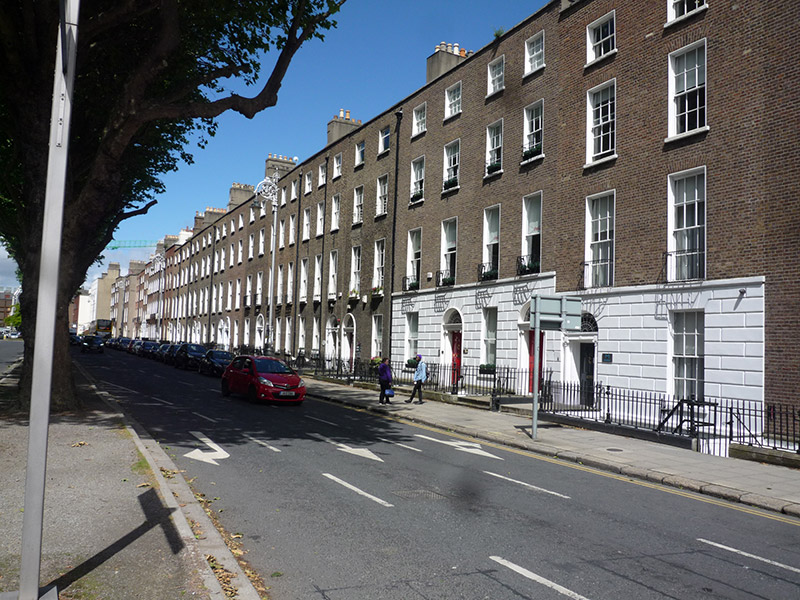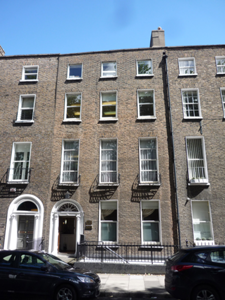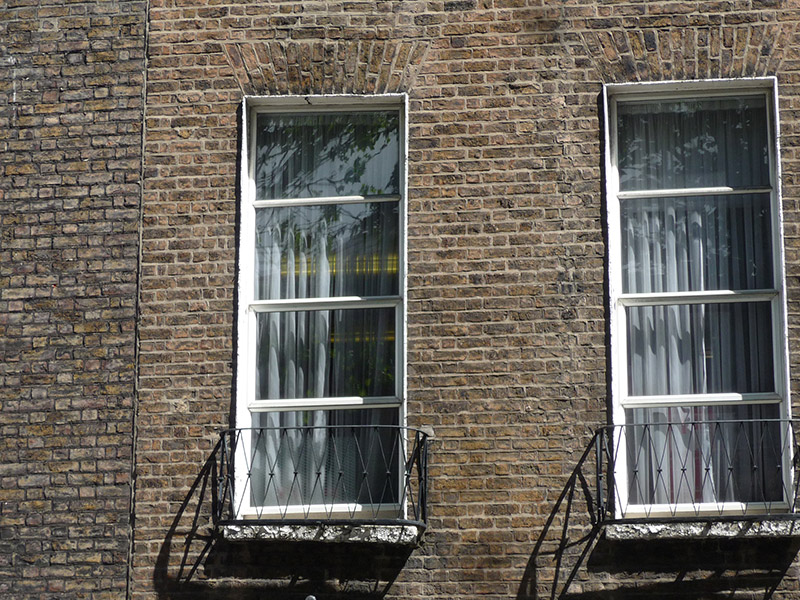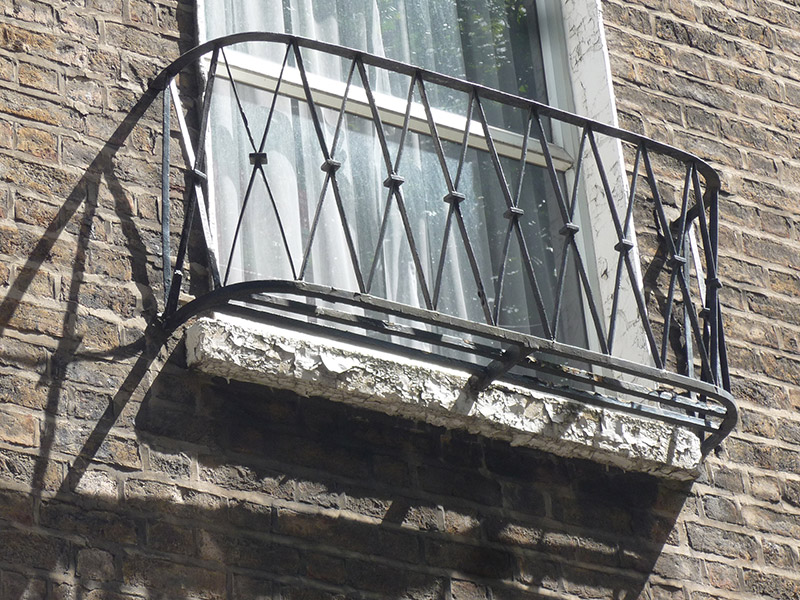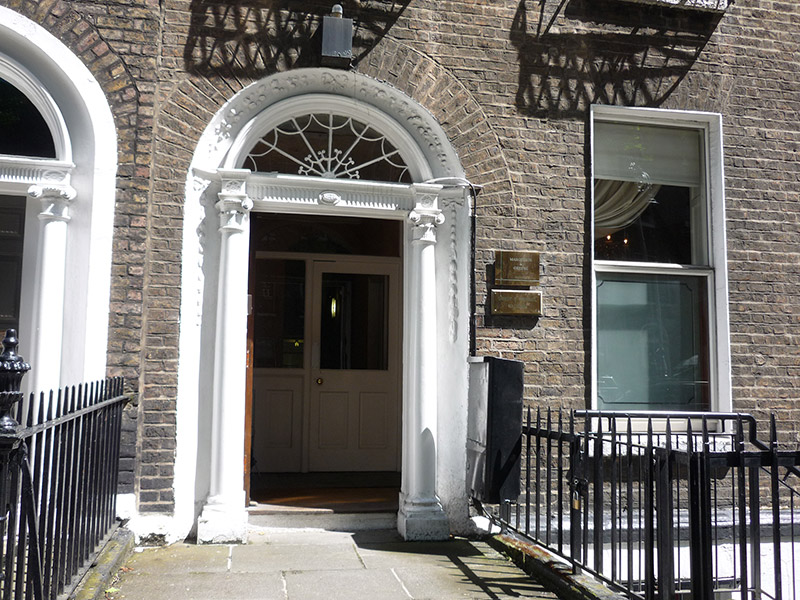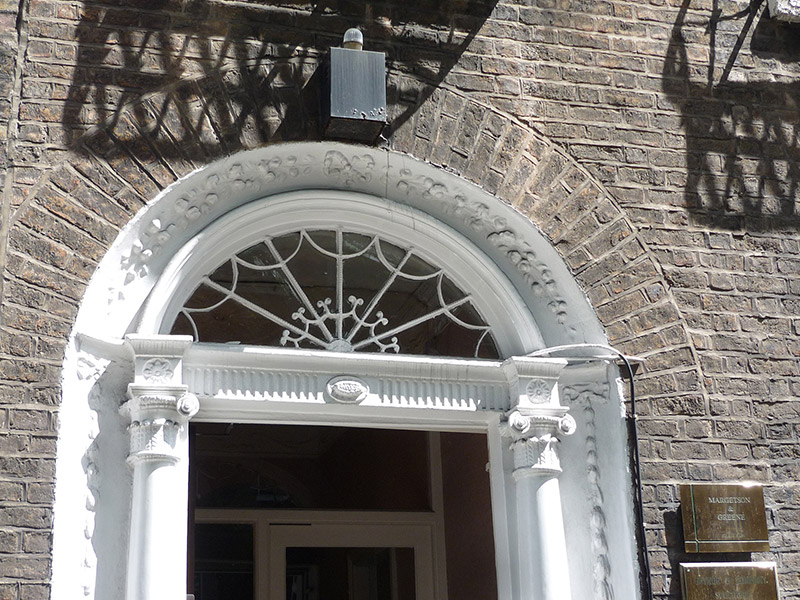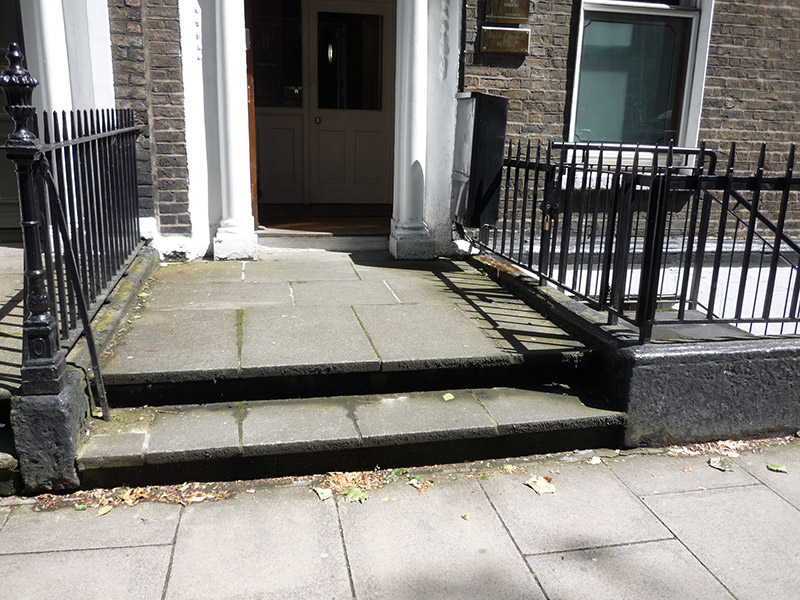Survey Data
Reg No
50100483
Rating
Regional
Categories of Special Interest
Architectural, Artistic
Original Use
House
In Use As
Office
Date
1800 - 1820
Coordinates
316629, 233296
Date Recorded
01/07/2016
Date Updated
--/--/--
Description
Attached three-bay four-storey former house over basement, built c. 1810, having two and three-storey abutments to rear. Now in office use. M-profile pitched slate roof, front pitch hipped at west end, behind brick parapet with concrete coping and parapet gutters, and having dormer window to south slope of rear pitch. Shouldered rendered chimneystack to east end; shared cast-iron downpipe. Flemish bond brown brick walling on painted masonry plinth over painted rendered basement walling. Square-headed window openings, diminishing to upper floors, with painted rendered reveals and painted granite sills. One-over-one pane replacement uPVC windows to front elevation, with wrought-iron balconettes to first floor; rear has apparently timber sash windows. Round-headed doorcase having cavetto-moulded architrave with festoons, Adamesque Ionic columns, fluted frieze with rosettes and cornice, decorative cobweb fanlight in moulded architrave and ten-panel timber door with brass furniture. Repaved platform bridging basement, with matching steps to street level. Basement enclosed by mild-steel railings on painted moulded granite plinth. Matching entrance gate and recent steel steps to basement. Modernized two-storey mews building to rear, fronting Little Fitzwilliam Place, having English garden wall bond yellow brick walls and square-headed integral carriage-arch behind recent steel roller gate with segmental brick relieving arch.
Appraisal
A late Georgian house, likely built as a pair with No. 36 and converted for use as offices. The building retains the well-balanced proportions and graded fenestration pattern typical of the period and is enriched with a pretty doorcase featuring garlands and ribbons, Ionic columns and a decorative fanlight. the balconettes to the first floor, and the intact appearance of the setting details ensures that No. 35 makes a strong contribution to the historic and largely cohesive character of Baggot Street, which has been fairly well retained along this north-eastern stretch. Development of the street began at the west end in the late eighteenth century, but was slow due to the recession at that time; however, by the mid-nineteenth century the street had developed into a thriving residential thoroughfare. There are many signs of speculative building including variation in levels, materials and detailing.
